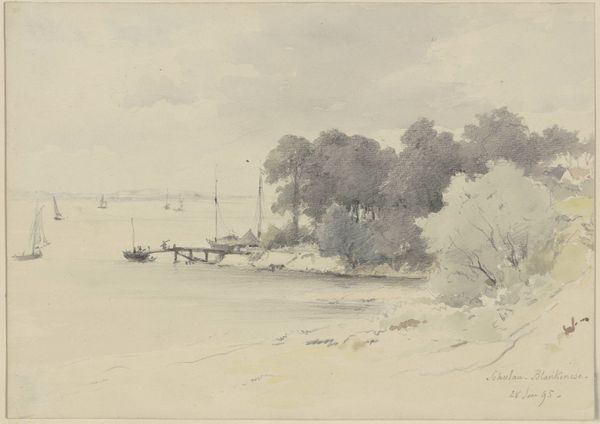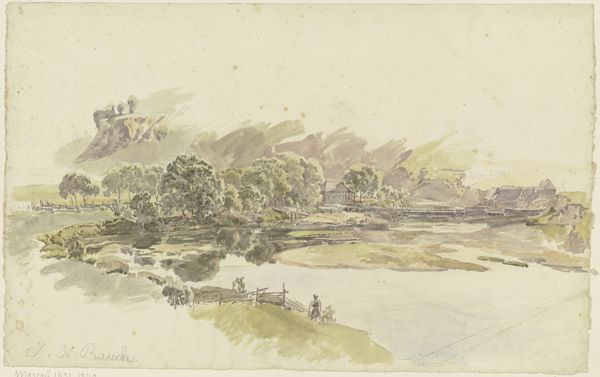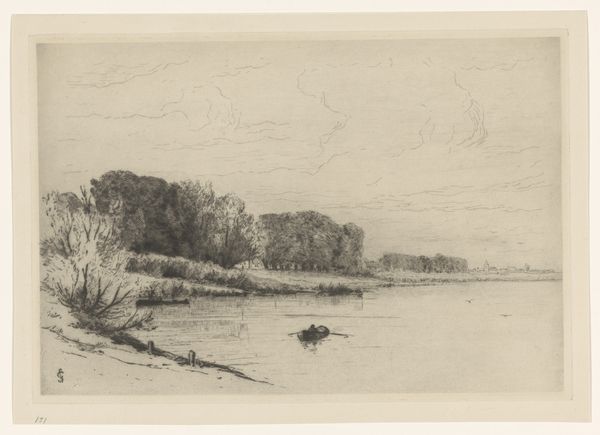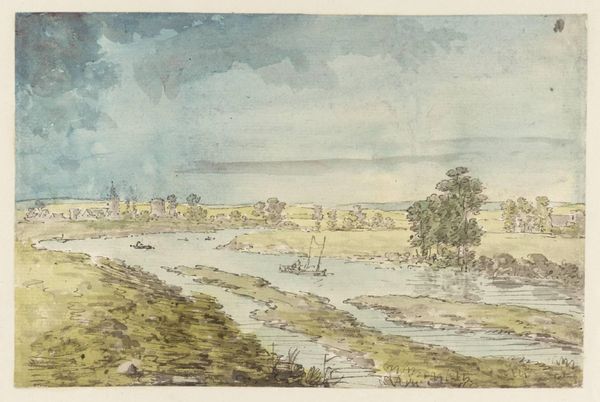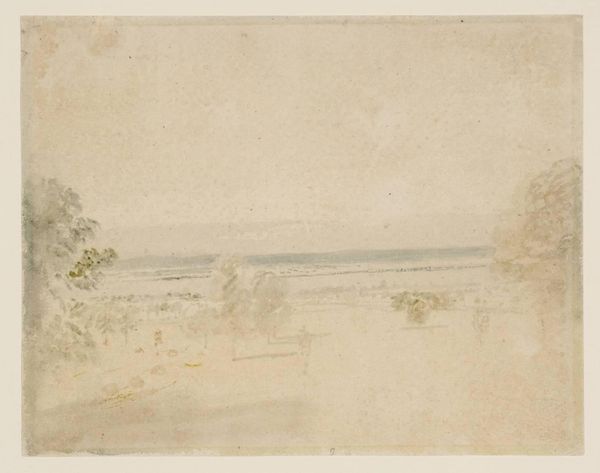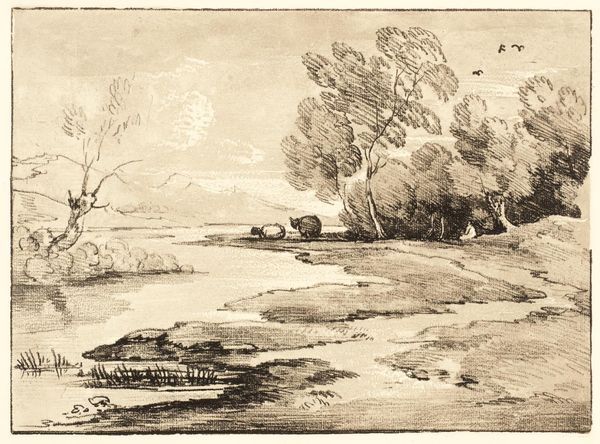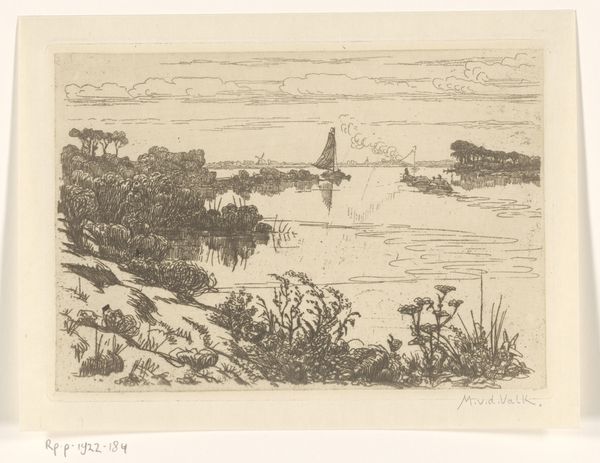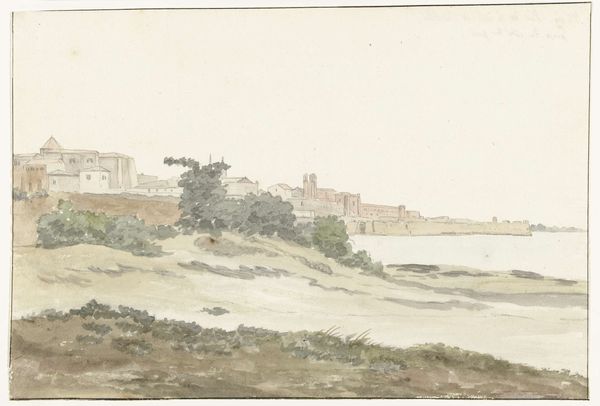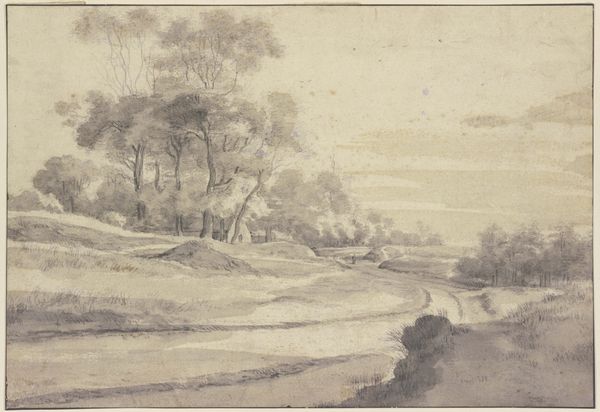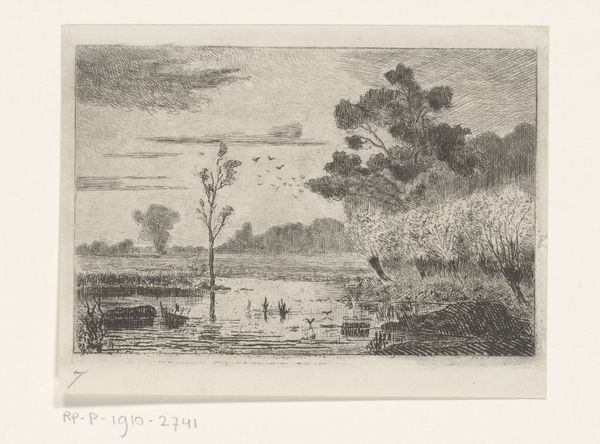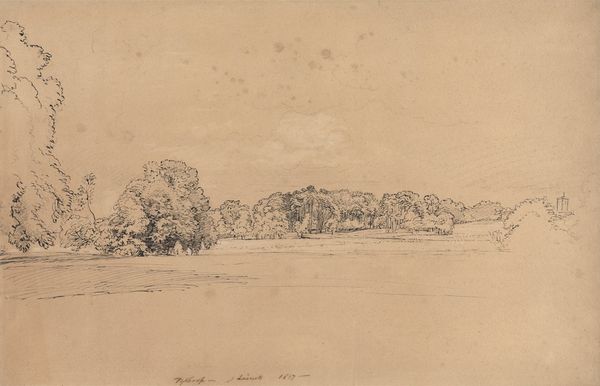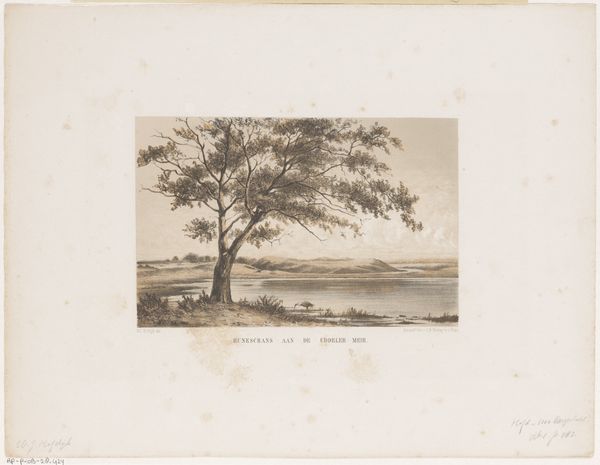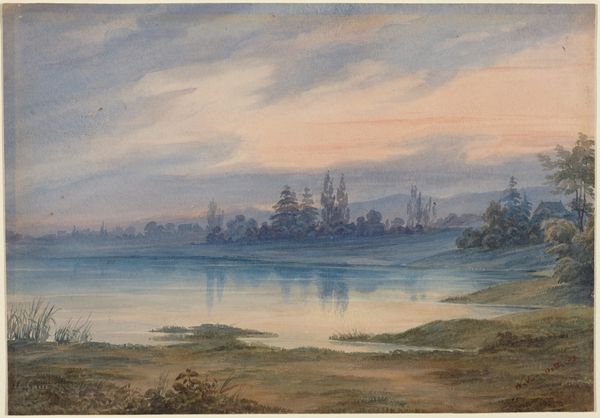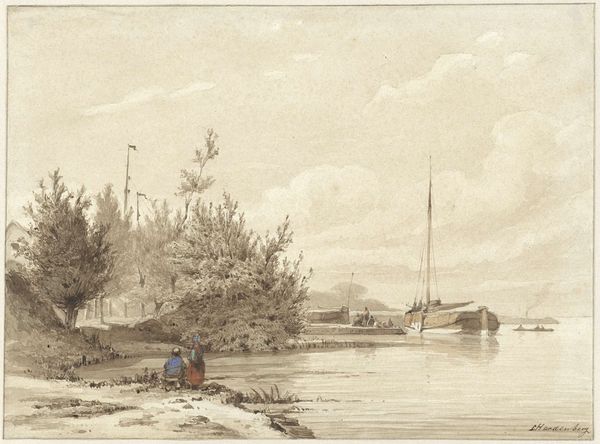
drawing, plein-air, watercolor
#
drawing
#
plein-air
#
landscape
#
watercolor
#
romanticism
Dimensions: sheet: 9 1/4 x 14 1/4 in. (23.5 x 36.2 cm)
Copyright: Public Domain
Editor: We're looking at "Landscape on a Bay," a watercolor drawing, possibly "en plein air," made sometime in the 1800s. It reminds me a bit of Constable, very understated and serene. What strikes you first about its visual qualities? Curator: Note the artist's manipulation of watercolor. See the distinct zones: the relatively dense application in the foliage contrasts sharply with the graded washes of the sky and the subtly modulated surface of the water. The interplay of these textures creates depth. How do you perceive the effect of this deliberate structuring? Editor: It definitely separates the planes and makes it less "flat," giving the image some volume. Are there other examples you see? Curator: Certainly. The dark to light transitions aren’t only about value but about delineating form, giving substance to otherwise two-dimensional representations of trees and land. Look carefully at the negative space around the trees. Note how the composition guides the viewer’s gaze from left to right, leading the eye toward the distant horizon. How does this technique contribute to the overall pictorial harmony? Editor: I suppose it gives the image a sense of movement and progress; very subtly so! And the gate creates a pathway for my eyes. Curator: Precisely! The placement isn’t arbitrary; it’s carefully calculated to establish spatial relationships. Its muted color and simplified forms help to achieve a pictorial coherence, despite the absence of striking contrasts. What we're observing here transcends mere representational fidelity. It speaks of structural elegance. Editor: I see it. I appreciate how paying attention to structure reveals such deliberate artistry. Thanks. Curator: Indeed. The distillation of natural forms into carefully arranged components yields profound artistic insights.
Comments
No comments
Be the first to comment and join the conversation on the ultimate creative platform.
